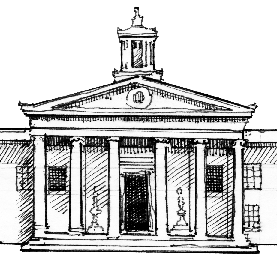On 21 January and again in March 2006 the Peckham Society through Peckham Vision arranged a historical event and meeting about the future of Peckham town centre. The venue was innovative as it was held in a CIP (Copeland Industrial Park) building which in the 19th century was a factory for making sports goods including cricket bats made from willow grown in Suffolk. This site is enclosed by Rye Lane, Bournemouth Road, Copeland Road and the Moncrieff railway viaduct.
Peckham Vision is a consortium of local residents, artists and businesses who want to raise awareness of the issues relating to central Peckham and stimulate an informed discussion. The Peckham Society is taking an active part. The significance of the site is that at the UDP (Unitary Development Plan) meetings last year it was discovered that Tfl (Transport for London) was to demolish all the buildings on this triangular site and build a huge tram maintenance depot and terminal. The site owners and owners of the Rye Lane shops knew nothing of this plan. The aims of this event and meeting were to make accessible to the public the information about central Peckham and in turn to inform the public and residents about the vision we have for central Peckham acquired during the UDP inquiry. The event also aimed to help inspire the public and residents with the vision the Peckham Society and others have for central Peckham which includes the designation of a conservation area.
Peter Frost, Chairman of the Peckham Society, has said: ‘The Peckham Society sees the tram as an excellent facility for Peckham and thinks that it presents an exciting opportunity for Southwark Council to consolidate its plans to open up the sadly neglected area in front of Peckham Rye Station by creating the tram terminus there.’ He went on to say: ‘The industrial storage and maintenance facilities for the tramway have no place in the centre of a thriving inner city community, particularly one such as Peckham which is developing a vibrant and widely diverse modern community in combination with the historic aspect and importance of both its buildings and social history.’



